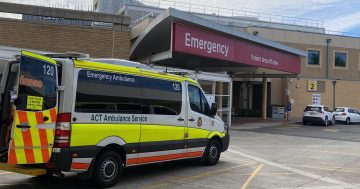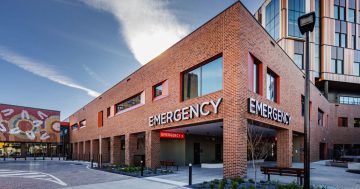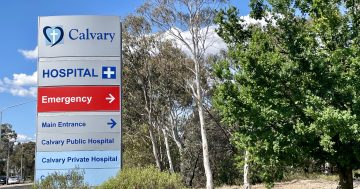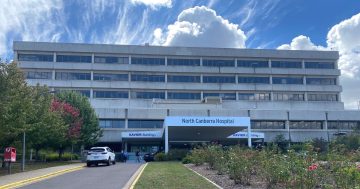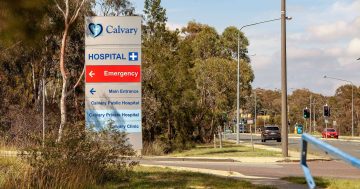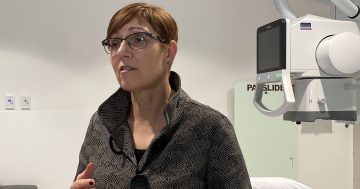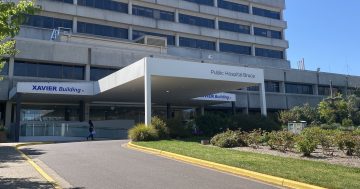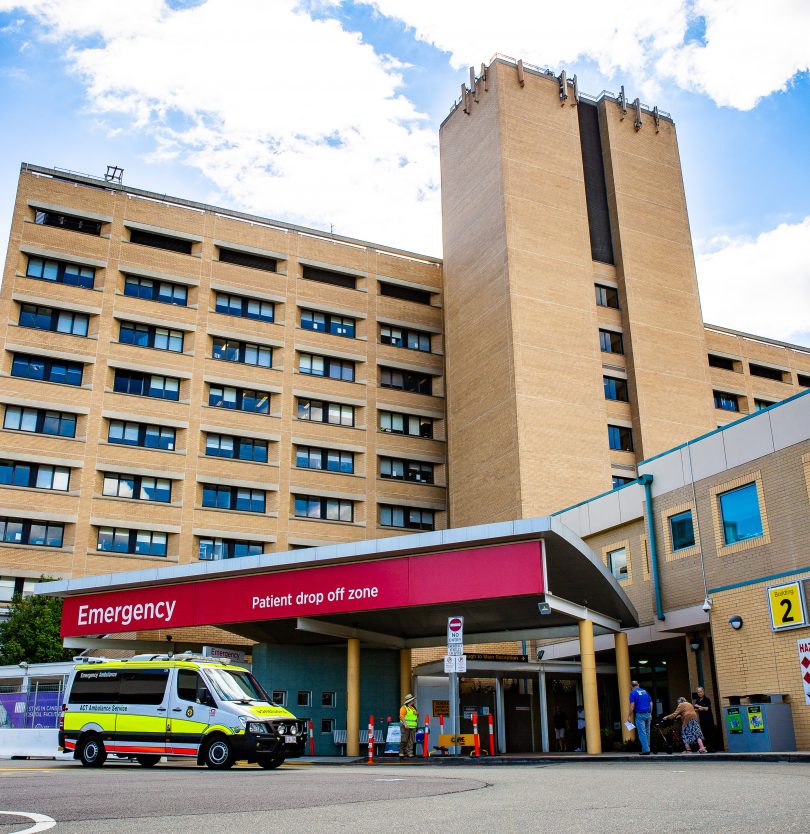
Work is continuing on improving patient flows at Canberra’s Emergency Departments. Photo: File.
There are signs of improvement in the ACT’s Emergency Departments and elective surgery performance but they remain thorny issues for the ACT Government and hospital management.
Responding to the latest Quarterly Performance Report, Health Minister Rachel Stephen-Smith said ED wait times continued to be a challenge and admitted that while progress was being made on elective surgeries, the government would not meet its target of more than 16,000 surgeries in 2020-21.
The latest Quarterly Performance Report shows patients are still spending too much time in the ED before being seen by a doctor. However, it says 46.5 per cent of patients received treatment within the clinically recommended time for their urgency (triage) category, up from 40.8 per cent in quarter 2, 2019-20.
Waiting times for Urgent, Semi-urgent and Non-urgent categories worsened in the second quarter, with patients waiting 58, 72 and 57 minutes respectively, up from 38, 49 and 40 minutes.
But Canberra’s EDs also experienced an 11.7 per cent jump in presentations to nearly 40,000 presentations. A year previously, with more than 2,000 fewer presentations, Canberra’s EDs were taking 68, 77 and 62 minutes to see people in those categories.
The main ED at Canberra Hospital took 75, 79 and 60 minutes to see patients in the three categories, again longer than in quarter 1, but better than a year ago when it was 85, 85 and 69 minutes.
The proportion of patients starting treatment on time deteriorated from quarter 1, with 76.5 per cent of Emergency compared with 78.7 per cent, Urgent 32.7 per cent (43%), Semi-urgent 44 per cent (58.4%) and Non-urgent 79.6 (88.6%) but again these were improvements on the same time a year previously when it was 71.1 per cent, 19.3 per cent, 35.1 per cent and 77 per cent for the respective categories.
The proportion of patients leaving the ED within four hours of presentation fell 3.3 per cent from 59.8 per cent to 56.5 per cent, but a year previously it was only 51 per cent.
More people did not wait to be seen than in the first quarter, almost doubling from 2.7 per cent to 4.9 per cent. In December 2019, that figure was 5.3 per cent.
Ms Stephen-Smith says ED performance was a key focus for both Canberra Hospital and Calvary Public Hospital Bruce.
“Compared with the same time from the previous year, presentations across our system were 6 per cent higher, but performance improved slightly with more patients leaving ED within four hours,” she said.
Ms Stephen-Smith said both Calvary Public Hospital Bruce and Canberra Hospital were implementing changes to processes to improve patient flow through the emergency departments.
There was a nearly 10 per cent fall in the number of elective surgeries performed in the quarter compared with the previous one to 3,601.
But compared with the same quarter in 2020-21, elective surgery increased by 3.6 per cent.
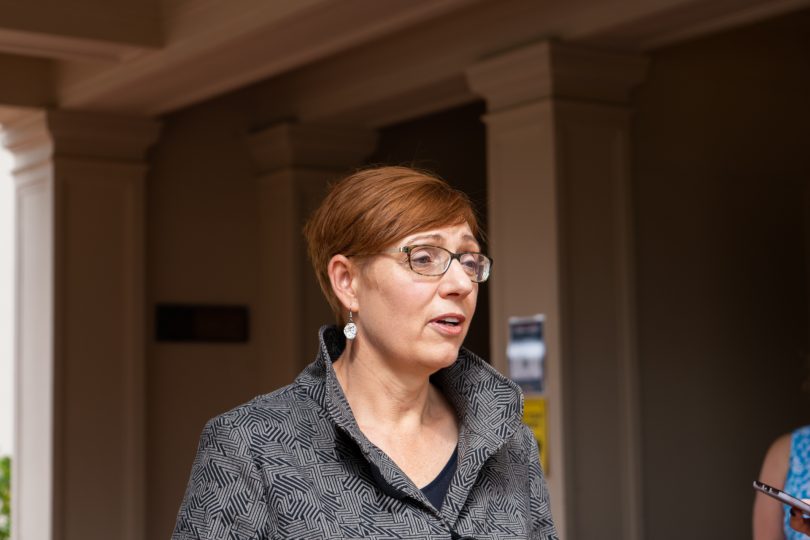
Health Minister Rachel Stephen-Smith: “Our teams will deliver at least 1,000 more elective surgeries in 2020-21 than the previous record number of 14,015 in 2018-19.” Photo: Dominic Giannini.
Waiting times improved slightly for Semi-urgent and Non-urgent surgeries from 68 and 291 days to 63 and 232 days.
A year previously, the waiting time for Urgent and Semi-urgent surgery was the same at 17 and 63 days but was only 187 for Non-urgent surgery.
The percentage of elective surgery procedures performed within clinically recommended timeframes improved in the quarter.
Urgent went from 98.3 per cent to 98.9 per cent, Semi-urgent from 60.3 to 68.4 per cent and Non-urgent from 70.7 per cent to 74.9 per cent, but there was little change from a year before when it was 97.9 per cent, 70.6 per cent and 75.6 per cent.
There were slightly fewer patients waiting for their elective surgery at 5,253, down from 5,341, but the number of overdue patients waiting for their elective surgery rose 7.6 per cent to 1,090 from 1,013. A year previously, the number of overdue patients was only 783.
More than 4,000 patients (4,138) were added to the elective surgery waiting list in the quarter, a 3.8 per cent reduction on quarter 1 (4,300).
Ms Stephen-Smith said the government was making progress, helped by its $30 million investment to boost elective surgeries, outpatient appointments and medical procedures impacted by COVID-19 in 2020.
“At 30 June 2020, the Territory had 1,505 patients overdue and awaiting surgery. By 29 March 2021, only 151 of those patients remained on this list. However, we are still seeing the impact of COVID-19 on the overall number of people awaiting elective surgery and the total number overdue for surgery,” she said.
The Minister said that at almost 7,600, the number of elective surgeries performed in the first half of 2020-21 was a record and reflected incredible work occurring through a collaborative effort across both public and private hospitals.
But it now seemed unlikely that the government would meet its target of more than 16,000 elective surgeries in 2020-21 due to high demand for emergency surgery at Canberra Hospital and not enough capacity across the system.
“However, our teams will deliver at least 1,000 more elective surgeries in 2020-21 than the previous record number of 14,015 in 2018-19,” she said.
There were 36,600 nurse-led Walk-in Centre presentations in the quarter, an increase of 52.7 per cent on the previous quarter, and 80.8 per cent of them received treatment.












